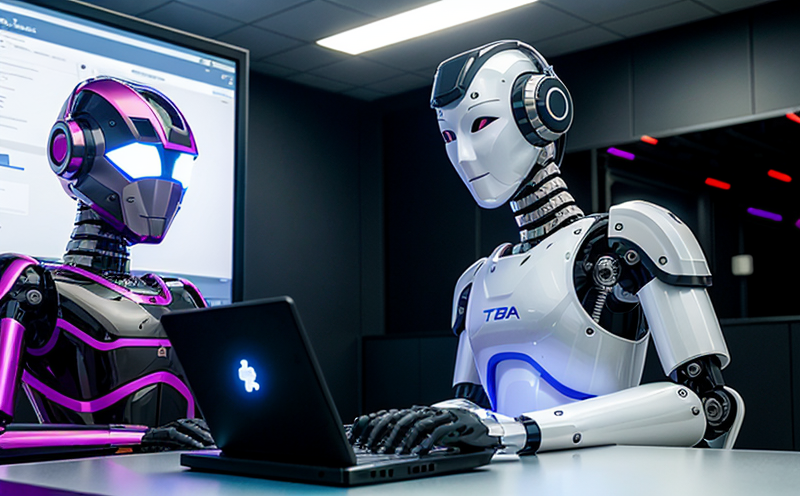NIST Cybersecurity Framework (CSF) Compliance in Robotics
Compliance with the National Institute of Standards and Technology's (NIST) Cybersecurity Framework (CSF) is essential for ensuring that robotics and artificial intelligence systems are secure, resilient, and reliable. In an increasingly interconnected world, cybersecurity threats can have severe consequences for robotic systems operating in critical sectors such as healthcare, manufacturing, transportation, and defense.
The NIST CSF provides a strategic framework based on five core functions: Identify, Protect, Detect, Respond, and Recover. This structured approach helps organizations manage cybersecurity risks effectively by addressing the entire lifecycle of a system's security posture. For robotics systems, this means understanding potential vulnerabilities, implementing appropriate protections, detecting anomalies, responding to incidents, and recovering from disruptions.
Our specialized testing services focus on ensuring that robots comply with these five functions as outlined in the NIST CSF. By doing so, we help organizations meet regulatory requirements, protect sensitive data, and maintain operational integrity across various industries. Our team of experts works closely with clients to tailor solutions that align with their specific needs and ensure robust cybersecurity measures are in place.
Robots rely on complex networks of sensors, actuators, processors, and communication protocols to function effectively. As these systems become more integrated into critical infrastructure, the risk of cyberattacks increases significantly. Therefore, ensuring compliance with the NIST CSF is crucial for maintaining trustworthiness and reliability in robotic applications.
Our testing methodologies are designed to identify potential weaknesses within the system architecture, assess susceptibility to various types of attacks (e.g., malware injection, denial-of-service), evaluate data integrity measures, and verify adherence to best practices recommended by NIST. Through rigorous testing protocols, we can help organizations build confidence in their robotic systems while mitigating risks associated with cyber threats.
By leveraging our expertise in robotics cybersecurity, you gain access to comprehensive solutions that enhance the overall security posture of your robotic assets. Whether it's validating compliance against specific industry standards or conducting advanced penetration tests aimed at identifying hidden vulnerabilities, we provide tailored services aligned with the NIST CSF guidelines.
Scope and Methodology
| Function | Description |
|---|---|
| Identify | Assessment of asset inventory, risk management strategies, and incident response plans. |
| Protect | Evaluation of access controls, encryption methods, and device authentication protocols. |
| Detect | Monitoring for unusual behavior using anomaly detection algorithms and continuous auditing tools. |
| Respond | Simulation exercises to test incident response procedures under realistic conditions. |
| Recover | Evaluation of disaster recovery plans, business continuity measures, and post-incident analysis reports. |
We employ a multi-faceted approach that combines technical assessments with strategic insights into organizational policies. Our goal is to provide thorough evaluations that cover every aspect of the NIST CSF framework, ensuring comprehensive coverage during each phase of testing. This ensures not only compliance but also enhanced resilience against future threats.
Industry Applications
Manufacturing: Ensuring secure communication channels between robotic arms and control systems prevents unauthorized access to production lines, safeguarding proprietary processes.
Healthcare: Protecting patient data stored within robotic assistants used in hospitals through robust encryption techniques minimizes the risk of sensitive information leaks.
Transportation: Securing autonomous vehicles by implementing strong authentication mechanisms and regular software updates reduces the likelihood of cyber attacks leading to accidents or disruptions.
Defense: Verifying compliance with NIST CSF helps protect military-grade robotics from malicious intrusions, preserving operational effectiveness during critical missions.
The versatility of our testing services extends beyond just these sectors; they can be applied universally across any industry where robotic systems play a crucial role. Our expertise guarantees that whatever application you have in mind, we will provide tailored solutions aligned with the highest standards set forth by NIST.
International Acceptance and Recognition
The NIST Cybersecurity Framework has gained widespread recognition internationally as a best practice for managing cybersecurity risks. Countries like Australia, Canada, and the United Kingdom have adopted its principles into national policies.
Many leading standards organizations such as ISO (International Organization for Standardization) and IEC (International Electrotechnical Commission) reference aspects of the NIST CSF in their guidelines.
Incorporating NIST CSF compliance into robotics testing demonstrates a commitment to international best practices, facilitating smoother interactions with global partners and ensuring interoperability across borders. By aligning with these internationally accepted standards, businesses can build stronger relationships and gain greater market access opportunities worldwide.





